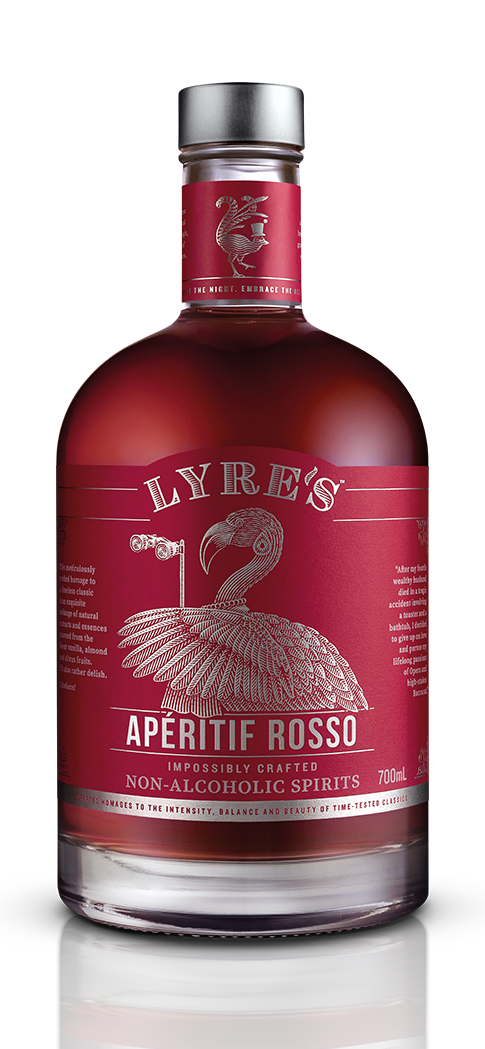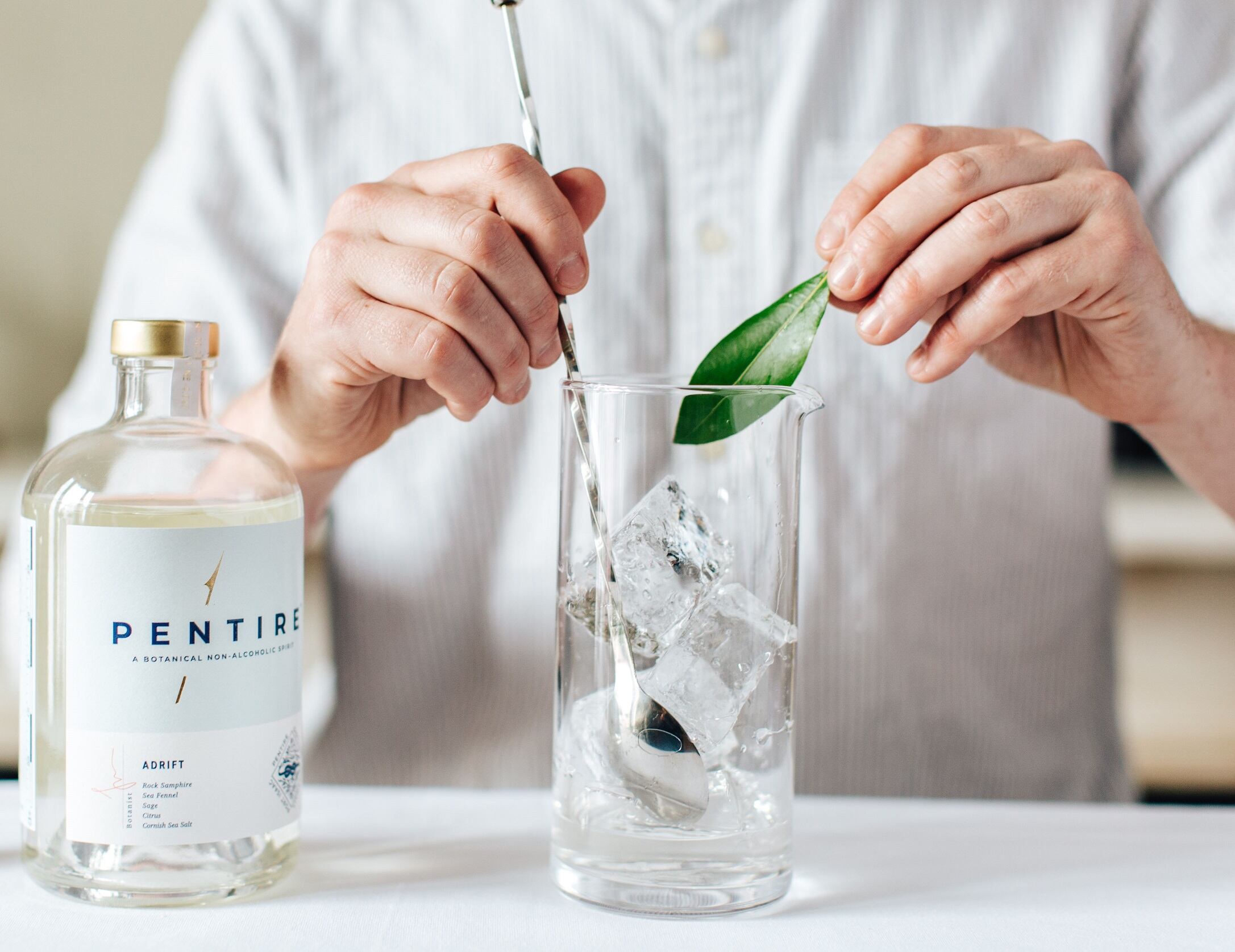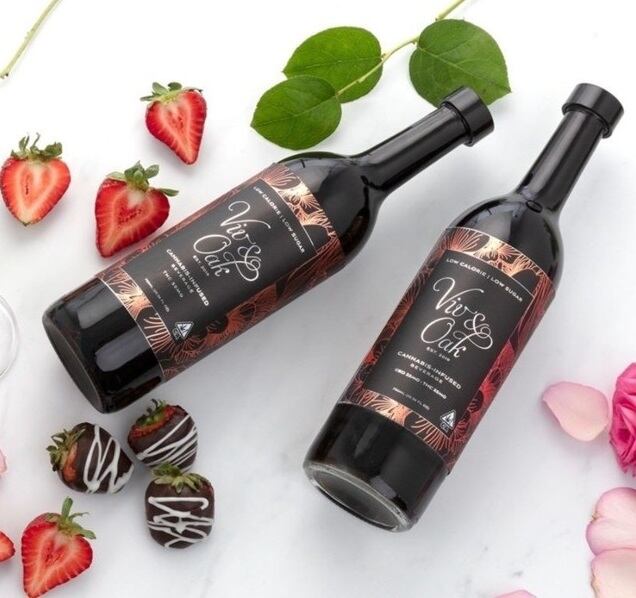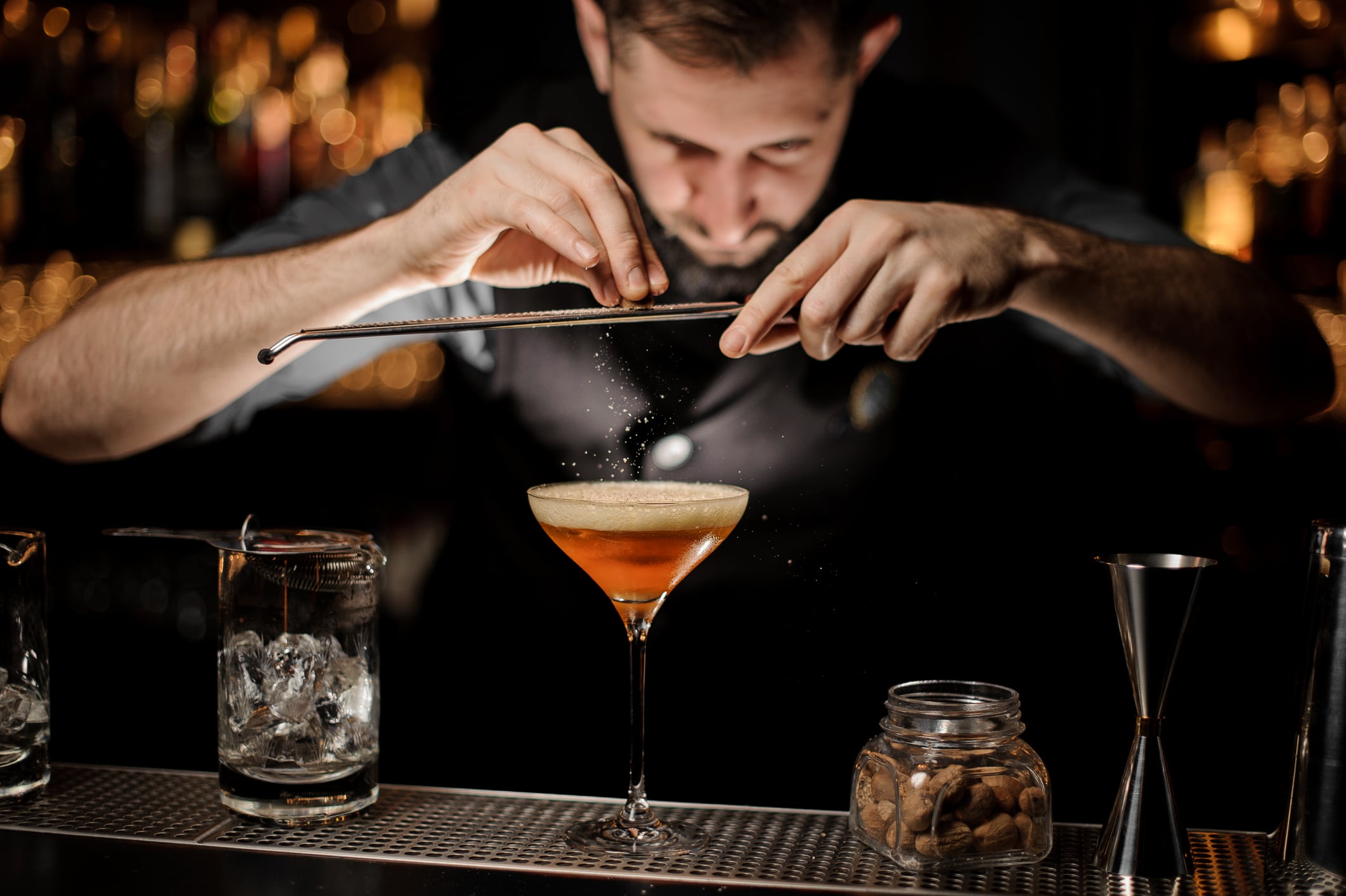Perhaps one of the biggest pitfalls in creating a low to no product is to assume the alcohol can simply be removed, without giving any consideration to what will be used in this place. With an increasing number of low to no products on shelves, consumers are growing wary of ‘glorified soft drinks’ – and want to see a premium price tag justified.
So what can brands do to make their product taste convincing? We take a look at four methods.
Mimic a warming sensation
One of the key properties of an alcoholic drink – particularly in the spirits category – is a warming sensation. It also contributes to the mouthfeel of a drink.
"When you're tasting a wine, you're looking at glycerol characters, which influence weight and how it finishes to lengthen the palate," says David Murphy, flavour architect for Australian non-alcoholic spirits brand Lyre’s.

"Depending on the product we're creating, we use a small amount of chilli or pepper-based extracts, that add length and carry to the palate and give a bit of a false alcoholic burn. There was quite a lot of intense work on that. It was a bit like reverse-engineering a tasting note for a wine, where you pull out all the flavour and aroma notes one-by-one.
"That wine tasting philosophy was carried throughout the process of making each of the products that Lyre's has released so far."
Vicky Berry, business development manager at ingredient and flavours manufacturer Synergy Flavours, says blends of extracts and natural flavours can be carefully used to help achieve the same sensations as alcohol.
“Alcohol is a vasodilator and in addition confuses vanilloid receptors delivering a warming sensation," she explains. "This warming sensation can be linked to the relaxation people feel when enjoying an alcoholic beverage.
“We help replicate this experience by using blends of extracts and natural flavours. Certain extracts can trigger the same receptors as ethanol and can thus help to mirror a similar response to when alcohol is consumed. Other flavouring preparations and substances can also be used to deliver additional warming and tingling affects.”
Go for quality ingredients
Brands such as Seedlip have built their reputation and premium image in no small part due to their emphasis on using quality ingredients and careful distilling. Seedlip quotes a 17th century book of distilling herbal remedies – ‘harnessing the power of nature’ and alchemy’ – as a core part of the inspiration for its pioneering brand. It then embraced that with two years of experimentation to develop a bespoke distillation process for each individual ingredient.
Whether taking cues from the soft drink market or alcoholic drink market, what is immediately obvious is that basic fruit flavours or a lime and soda no longer cut it: consumers want to be enticed in by something much more adventurous.
And another lesson to be learned is that consumers want quality, artisanal processes and ingredients – a factor that helps a brand leap into the premium category and justify a premium price tag.
Embrace botanicals
And out of those more adventurous flavours, botanicals are trending. Botanicals are an integral component of many alcoholic drinks anyway – think juniper and gin – but they're also trending in adult soft drinks, thanks to their ability to deliver a more sophisticated and complex flavour profile.
It’s a trend, therefore, that carries over well into the low/no alcohol category. Focusing on unique or unusual botanicals help deliver a distinct flavour and make low or no alcohol drinks stand out from the rest.

Pentire, for example, draws on plants from its native Cornish coastline such as rock samphire to sea purslane: delivering not only a distinct flavour profile but also building into its brand story.
And the choice of botanicals can really help deliver a particular, individual taste and character.
“Geranium, rose and lavender extracts deliver light floral characteristics adding a touch of sophistication – perfect as we move into the warmer months," explains Vicky Berry of Synergy Flavours. "Similarly, using tea essence – black, white and green tea, for example – can also support these fragrant floral tones with a balancing crispness.
“Herb extracts can be used to give a leafy herbaceous complexity in low and no alcohol drinks – mint, basil and rosemary and work particularly well. Similarly, cucumber essence delivers a refreshing green character which can enhance herb extracts and other fruits."
Even basic flavours that have been beverage staples for years can be reimagined, as is the case with citrus.
“Citrus is an important characteristic across alcoholic beverages," notes Berry. "Despite previously being seen as ‘veterans’ in beverages, blending different citrus extracts can add a refreshing twist in non-alcoholic drinks. Blood orange, mandarin, pink grapefruit, and Persian lime extracts can all elevate their status."
And balancing different flavours can be a way to really create depth.
“Contrasting the fresher green and floral profiles are spice extracts. Balancing spice extracts can add depth and aromatic notes in a darker non-alcoholic beverage. Ginger, cardamom, chilli and nutmeg work particularly well in adding interest and deepness. Oak essence also compliments this category, delivering a premium, sweet smoky wood character that can bring a feeling of heritage. In addition, vanilla extract can be used to deliver smokiness, richness and a balance of sweetness.”
Explore a new world: CBD and THC
As the market for CBD and (in some markets) cannabis opens up, some low and no alcohol beverages are exploring the category and seeing this as something new and exciting to draw in consumers.
“CBD is not burdened with the same stigma that alcohol has, yet it’s not ‘nothing either’,” Lolly Watkins of beverage marketing agency YesMore, explains. “The effects of CBD are notable and provide a sense of relaxation and calm, and have been proven to alleviate anxiety and insomnia – however as yet, it isn’t associated with any detrimental effects.”
CBD can cause formulation challenges in food and drink, due to its bitter aftertaste. Yet in alcohol, Watkins says CBD’s astringent taste can actually work in its favour. “The taste itself is attributed to the terpene blend of the cultivar it’s been harvested from,” she explained. “Like beer hop varieties, terpenes in cannabis plants vary wildly, and farmers take great pride in growing their plants to have the ideal blend of terpenes for taste.”
CBD can therefore present ‘zesty lemon’ or ‘juicy mango’ aromas and flavours. And when blending in with drinks, Watkins argues such attributes can be advantageous – particularly given that one of the drawbacks of alcohol-free spirits is the distinct lack of ‘tongue burn’, or any remaining bitterness and astringency.
Hop & Hemp, a low ABV, CBD infused beer, spots its opportunity among consumers who want to unwind with a drink – appealing to those who like to drink a beer after work or mid-week. Its 0.5% ABV beer contains 8mg CBD per 330ml serve ‘to take the edge off an evening’. The idea is to cater for Generation Z and Millennials who may be new parents, young professionals or health conscious consumers – giving them a chance to unwind without the set back of a hangover the next day.

Most drinks using CBD are free from THC, the psychoactive compound in cannabis. However, in North America brands are turning to both CBD and THC in their drinks.
California’s Viv&Oak launched two sparking rose wines last year: replacing alcohol with THC and CBD. The drink is made with a blend of California grapes that have been de-alcoholized and infused with CBD and THC, thus keeping the flavours and aromas of wine with a fraction of the calories and sugar.
It says that the effect of THC and CBD arrives within 10 minutes of drinking and lasts for up to an hour. The wine is available in both high dose (50mg THC per 750ml bottle; suggested serving of 10mg THC) and low dose (25mg of both THC and CBD with a suggested serving of 5mg of each THC and CBD).
Blue Moon’s former brewmaster, meanwhile, last year launched Colorado’s first THC-infused de-alcoholized craft beer. Keith Villa created the popular US beer Blue Moon in 1995 and retired from its parent company Molson Coors in 2018. He has since founded Ceria Brewing Company to develop cannabis-infused beers. Its first launch, Grainwave, is a dealcoholized Belgian-style White Ale brewed with blood orange peel and coriander, infused with 5mg of THC per 10oz bottle.

